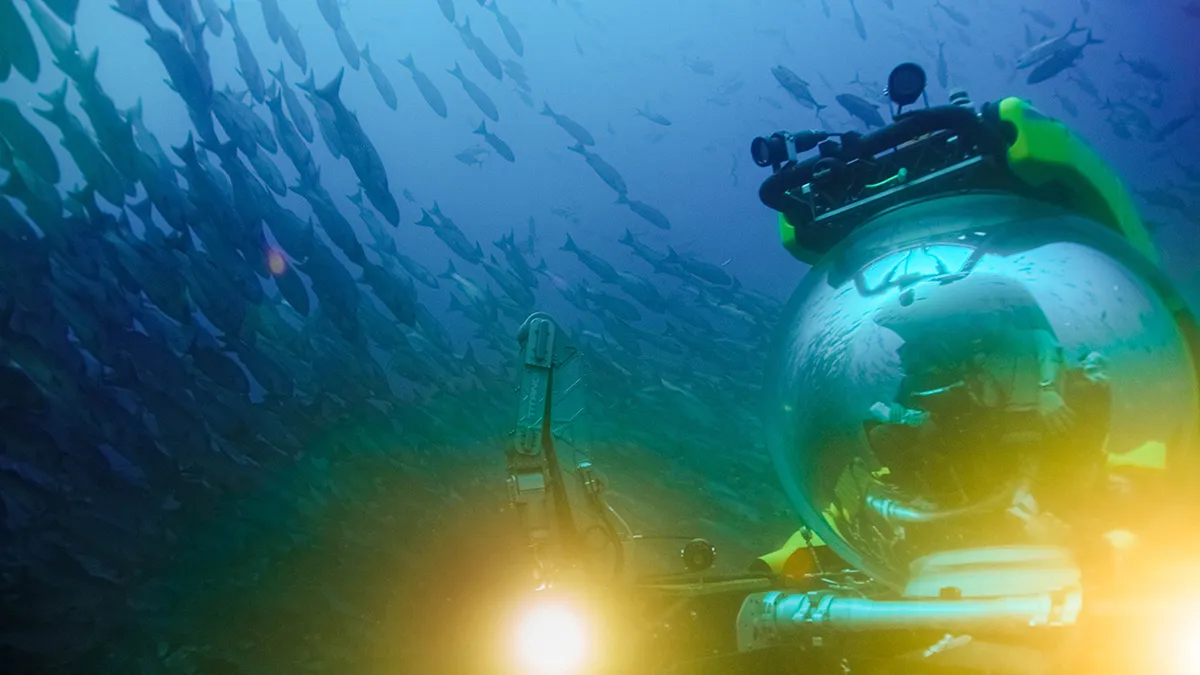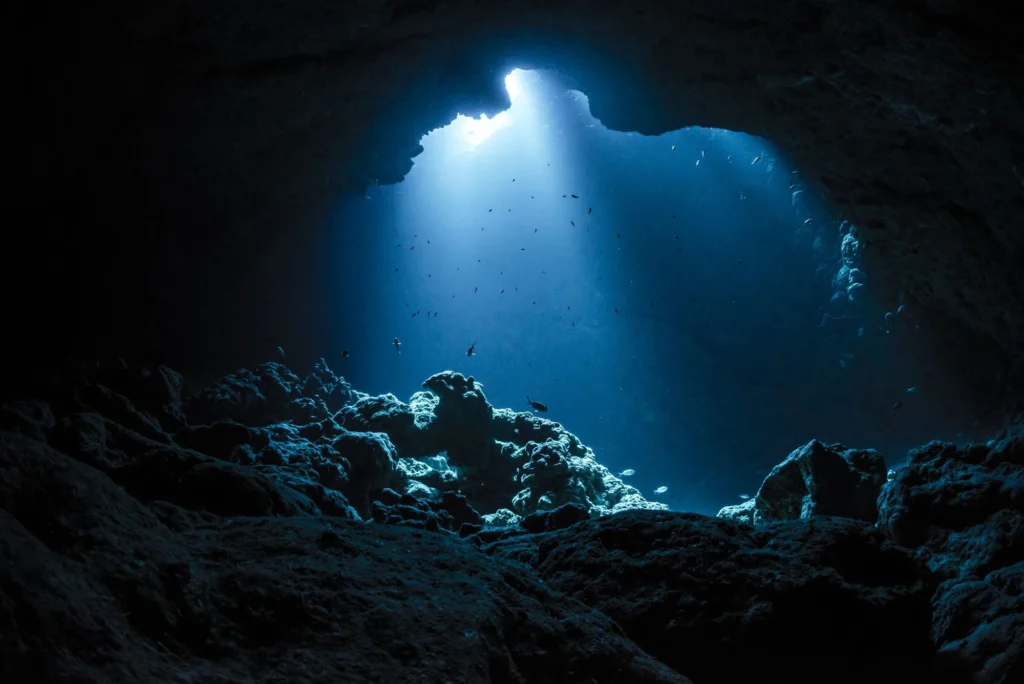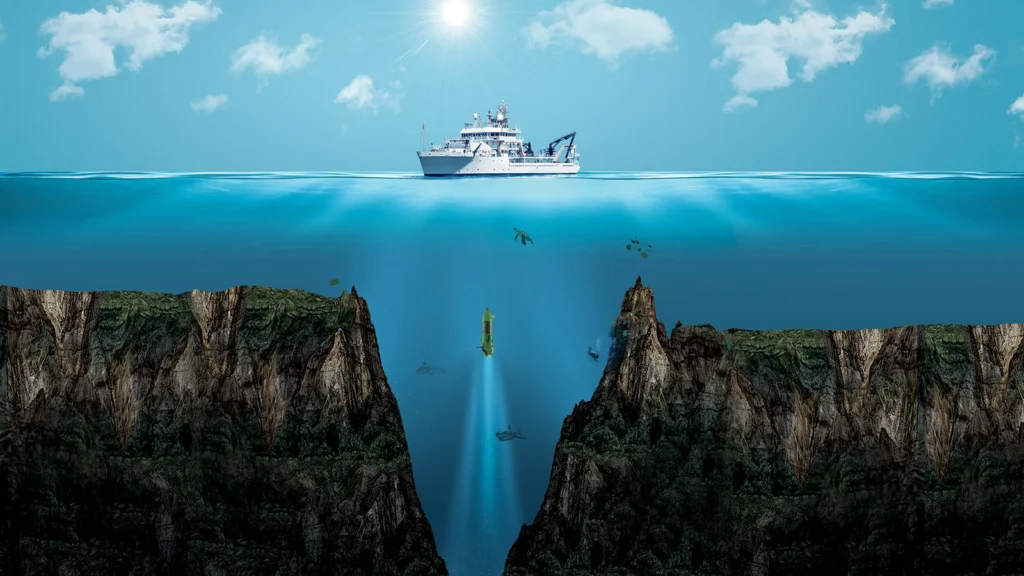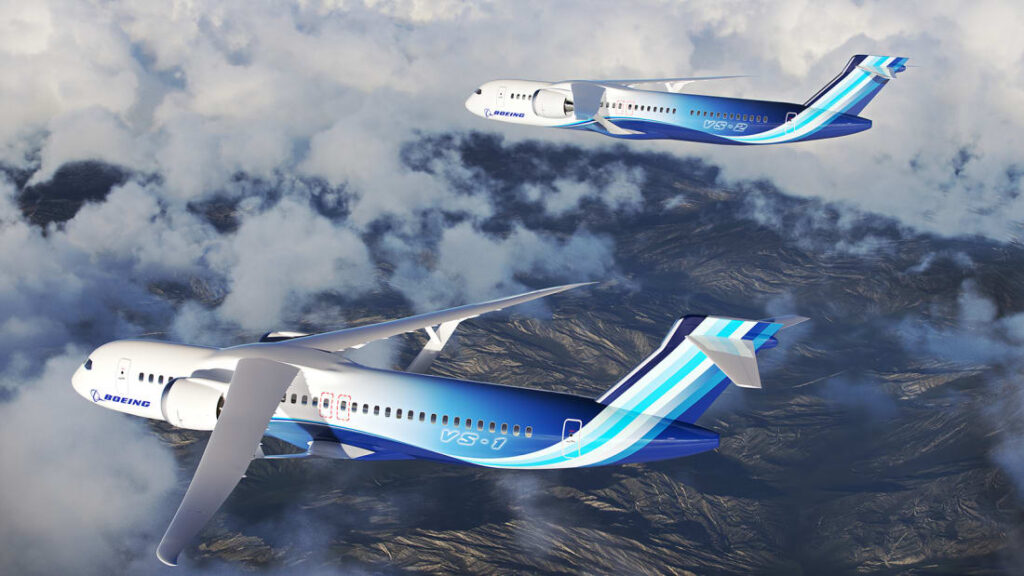Entertainment
Humanity has ventured into space for a long time, but why is the deep ocean still a mystery to mankind?

What is there in the deep ocean? Humans have even ventured into space for a long time, so why does the deep sea on Earth still hold so many mysteries for humanity?
The average depth of the global ocean is 3,700 meters. So, what lies beneath the deep sea? What kind of enigmatic world is it?
According to modern scientists, our understanding of the deep sea in the previous century was even less than our knowledge of the Solar System! However, with the advent of manned and unmanned deep-sea submersibles, humans have been able to explore a portion of the depths beneath the ocean floor.
Currently, only a few countries in the world have independently developed manned deep-sea submersibles capable of diving to depths of 10,000 meters, such as China and the United States.
The pressure in the deep sea is hundreds of times higher than the atmospheric pressure on the surface. To withstand such high pressure, deep-sea submersibles must have extremely strong pressure resistance. If it is a manned deep-sea submersible, it also needs to ensure the safety and comfort of the people inside.

The area of the deep sea explored by humans currently represents only a very small portion of the total ocean area. The average depth of the global ocean is about 3,700 meters, while the ocean covers 70% of the Earth’s surface. Therefore, there are still many hidden secrets in the depths of the ocean that may require a lot of time to discover.
The term “deep sea” is used to refer to the deepest parts of the ocean, typically the areas where the ocean floor is deeper than 200 meters. Due to the unique environment of the deep sea, including light, pressure, temperature, and other factors, the marine life and landscape in the deep sea are completely different from what we usually encounter on land and in shallow waters.

Here are the main environmental and ecological characteristics of the deep sea:
Deep-sea environment: The water temperature and pressure in the deep sea are extremely high, reaching hundreds of atmospheres. The light is dim and elusive, and there are geological phenomena such as deep-sea cold currents, underwater volcanoes, and hydrothermal vents.
Deep-sea fish: Deep-sea fish are abundant and diverse, with many species having unique and striking appearances. They often have enlarged mouths and reduced eye function. Many deep-sea fish emit light, either to attract prey or to find mates. Compared to fish in shallow waters, deep-sea fish have fewer bones and muscles, with a higher proportion of cartilage in their skeletal structure.
Deep-sea abyssal fauna: Deep-sea abyssal fauna exhibit a variety of forms. Some are visually stunning, while others appear peculiar. These deep-sea organisms play an important role in the deep-sea ecosystem.
Deep-sea mud: The organic matter in deep-sea mud is unique because the low temperature and high pressure cause a significant amount of marine organic matter to gradually settle at the ocean floor.
Deep-sea hydrothermal vents: Deep-sea hydrothermal vents refer to organisms living near the hot water vents in the deep sea. The temperature at the center of these hydrothermal vents can reach several hundred degrees Celsius. It is hard to imagine that a large number of bacteria thrive in such harsh environments. Some of these bacteria consume sulfides emitted from the hydrothermal vents, deriving energy from them.
Deep-sea topography: The topography of the deep-sea floor is often complex and rugged, with features such as deep-sea trenches, underwater cliffs, and canyons.

Why is the deep sea still a mystery to humanity?
Exploring the deep sea is not an easy task, requiring various skills, equipment, and specialized knowledge. There are several main reasons why humans find it difficult to access the mysteries beneath the ocean floor, including the following three reasons:
First, the deep sea is an extremely harsh environment with very low temperatures, high pressures, and a lack of light. These factors make it challenging for humans to be safe in this environment without the assistance of protective and respiratory support equipment. Moreover, the deep sea contains toxic gases and hazardous radioactive substances that are harmful to human health.

Second, the deep sea is a vast and complex environment with diverse terrains, geology, and organisms. To explore the deep sea, scientists have to utilize various techniques and technologies, such as submarines, remote sensing devices, unmanned vehicles, or underwater robots. However, these tools still have limitations in terms of mobility, signal transmission, and are only capable of withstanding pressures at certain depths.
Third, the deep sea is a relatively unexplored and poorly understood environment, harboring many mysteries and challenges. According to estimates, only about 5% of the ocean floor has been explored and accurately mapped. Nearly two-thirds of the life forms residing in the depths of the ocean remain unidentified. Many phenomena and natural processes occurring in the deep sea are still not clearly explained.

The reasons mentioned above explain why humans rarely explore the deep sea. However, this does not mean that humans are not interested in or overlook the values and potential of the deep sea. On the contrary, the deep sea is a valuable resource, a focal point for tourism and education, and an important factor in climate regulation and sustaining life on Earth. Therefore, exploring the deep sea is a necessary and meaningful task for humanity in the future.
According to: Earthlymission; Nature; NASA
Entertainment
Gamers fervently demand a simple feature, but Diablo 4 refuses hastily, surprising reasons.
All things considered, this isn’t an excessively high demand from the Diablo 4 gamers.
Diablo 4 has been receiving a great deal of recognition and praise from the gaming community following the improvements made in the latest version. Furthermore, anticipation is even higher for the upcoming first expansion of Diablo 4, Vessel of Hatred, set to be released next year. However, many gamers are already feeling disappointed as their heartfelt desires and expectations are not being fully met by Blizzard.

Accordingly, right from the game’s initial release, Diablo 4 players earnestly requested Blizzard to make changes to the inventory system. Firstly, they suggested creating a separate storage space for gems and precious stones. Secondly, they requested a feature that would make it easier for players to manage their items through a sorting and filtering system based on the quality of the loot. The first part of the request was addressed in Season 2, while regarding the loot filtering feature, many were surprised to learn that Blizzard would not be adding this functionality, even in the upcoming expansion next year.

Originally, this wasn’t an overly difficult or complex request, which is why Blizzard’s hesitancy and delay in responding has left many Diablo 4 players feeling frustrated. To explain their decision, Blizzard states that the changes need to be interconnected to maintain coherence and logicality. Therefore, before considering the loot filtering feature, the company is striving to implement other related adjustments that affect the functionality and diversification of item types. Of course, this response still doesn’t satisfy many people, as this is something relatively simple and could easily be addressed straightforwardly.

In this first expansion, several new features are being considered, including the removal of the Codex of Power from player’s inventory and changes to health and mana potions, as well as buffs.
Entertainment
Rumors have been circulating about a live-action film about GTA, the creator of the series spoke out to confirm one thing.
Rumors have been circulating about a live-action film about GTA, the creator of the series spoke out to confirm one thing.
With the brand’s popularity, it’s understandable that fans are eagerly anticipating a GTA film. Two of the most shocking pieces of news in the gaming world last week were Nintendo’s announcement of a live-action film based on The Legend of Zelda franchise and Rockstar’s promise to unveil the release roadmap for GTA 6 in December. While seemingly unrelated, recently there has been a surprising rumor circulating online that GTA 6 will serve as a stepping stone for Rockstar and Take-Two to release a film specifically for this franchise.

Fundamentally, this is entirely feasible as, alongside its immersive role-playing elements that attract a large player base, GTA is also renowned for its storytelling, setting, and notably, a plethora of iconic main characters throughout the game series. This material is sufficient to launch a cinematic work, and GTA fans have every reason to look forward to it. However, Take-Two’s CEO, Strauss Zelnick, quickly denied this and admitted that they are not interested in any film projects in the near future.

The reason was promptly given right after. Essentially, Take-Two could invest its own money to make a film or a series about GTA, and its chances of success would be significant. However, the publisher seems unenthusiastic about venturing into this new field because it would consume a lot of time and effort. Licensing the brand to a third party to develop a film project is also not worth mentioning because even if the film generates significant buzz, the revenue that Take-Two would receive wouldn’t be substantial, especially when compared to the earnings they have already generated from the GTA brand, particularly during the past decade of milking GTA 5. In summary, from Take-Two’s perspective, producing a film or film series about GTA would not yield profitable results.

Therefore, despite the strong desire, it is highly unlikely that GTA fans will have the opportunity to witness a cinematic work based on this franchise in the future. However, everything can change over time, especially as the trend of adapting games into films has seen significant success recently, as exemplified by the cases of Cyberpunk 2077 and The Last of Us.
Read more: CS:GO Breaks Records with Surging Gamer Engagement and Increased Spending
Entertainment
Why do private jet aircraft fly at higher altitudes than commercial planes?
Besides the luxury and convenience to cater to ultra-rich customers, private jets operate at higher altitudes compared to commercial planes.
Typically, most commercial planes operate at an altitude of around 10.6 km (the specific altitude will be determined by the air traffic control along the route) and are certified to fly at altitudes of up to 12 km. Some specific wide-body aircraft, such as the Airbus A380, Airbus A350, and Boeing 787, have certifications for even higher altitudes, reaching up to 13.1 km (with some variants, such as the 787-10 and A350-1000, evaluated at slightly lower altitudes of 12.52 km and 12.6 km). However, due to air traffic constraints, they may not regularly operate at these altitudes.
Meanwhile, most medium and large private jet aircraft typically operate at higher altitudes than this, sometimes surpassing the permitted limits due to reduced air traffic and fewer restrictions. According to Simple Flying, many types of private jet aircraft, including the Gulfstream G650 and G650ER, Bombardier Global Express, or Challenger jet, Cessna Citation X, and Dassault Falcon 7X, are certified to fly at altitudes of 15.5 km. In contrast, Embraer Legacy and Praetor, along with Cessna Citation Longitude and Excel jets, have certifications for slightly lower altitudes, limited to 13.7 km, as reported by Interesting Engineering. There are several explanations for the significant difference in cruising altitude between private jets and commercial planes during cruise mode, according to Interesting Engineering.
Safety Standards
Safety is the top priority for all aircraft, but private jets have more flexibility in regulations and systems. In the event of a cabin pressure loss, commercial planes must rapidly descend to a safe altitude below 3 km to provide sufficient oxygen for passengers.

This requirement demands specific design considerations for the aircraft’s structure and engines, as well as the installation of safety equipment such as oxygen masks and emergency slides. In contrast, private jet engines can facilitate quicker descent, and their cabin pressure and oxygen supply systems may vary. The risk of damage to the fuselage due to engine malfunctions is also lower for private jets, as their engines are located at the rear of the aircraft, far from the pressurized cabin.
Private Jets are Faster and More Efficient
Flying at higher altitudes also brings performance and fuel efficiency benefits. At higher altitudes, the air is thinner and cooler, improving the performance of jet engines and reducing fuel consumption. Of course, this must be balanced with the fuel required for the aircraft to reach such altitudes, which can be a challenge for heavier commercial planes.
The engines of private jets also have a higher bypass ratio, meaning they utilize more air from the core rather than the fan surrounding the core. This optimizes engine performance at higher altitudes.
The Importance of Aircraft Size
Private jet aircraft are designed to be flexible and efficient, with a higher power-to-weight ratio than commercial planes. This means they can climb and maintain speed at higher altitudes, where the air is thinner and there is less drag.

On the other hand, commercial planes are heavier and bulkier due to the need to carry many passengers and cargo. They also require large wings to support their weight at higher altitudes. This is why some aircraft models, such as the Boeing 777X, have folding wings to save ground space.
Smoother Experience at Higher Altitudes
Weather and turbulence in the air also affect comfort and safety during flight. When flying at an altitude of 10.6 km, commercial planes are almost unaffected by weather phenomena, but they may still encounter turbulence caused by wind shear or jet streams. This can cause discomfort for passengers and the flight crew, as well as put pressure on the aircraft’s structure. Private jets can avoid these issues by flying even higher, where the air is calmer and less turbulent. Private jet pilots also have more options to change direction or altitude in case of bad weather or air turbulence.
Reduced Air Traffic
Air traffic is another factor that influences the choice of altitude. Commercial planes must adhere to predetermined flight paths and altitudes, which are often crowded due to the numerous planes operating at these levels.
This can lead to issues such as flight delays, rerouting, increased fuel consumption, and emissions. In contrast, private jets have more freedom in choosing routes and altitudes, which are less congested than common altitudes. This helps save time and money while reducing environmental impact.
Source: Interesting Engineering
Read more: Elon Musk’s satellites has been warned that it could ‘crash’ into the Earth like an asteroid.
-

 AI1 year ago
AI1 year agoAI only needs to listen to the sound of keystrokes to predict the content, achieving an accuracy rate of up to 95%
-

 AI2 years ago
AI2 years agoMusk aims to create a super AI to rival ChatGPT
-

 Entertainment2 years ago
Entertainment2 years agoSurprisingly, a single YouTube video has the potential to cause serious harm to Google Pixel’s top-of-the-line smartphone
-

 Mobile2 years ago
Mobile2 years agoProduction issue with iPhone 15 display raises concerns among users
-

 AI2 years ago
AI2 years agoUpon its debut, Google’s chatbot Bard dealt a cold blow to its very creator.
-

 Entertainment2 years ago
Entertainment2 years agoCS:GO Breaks Records with Surging Gamer Engagement and Increased Spending
-

 Crypto1 year ago
Crypto1 year agoExplore in detail about Web 3
-

 Tips & Tricks2 years ago
Tips & Tricks2 years agoHow to distinguish AI-generated photos?













